

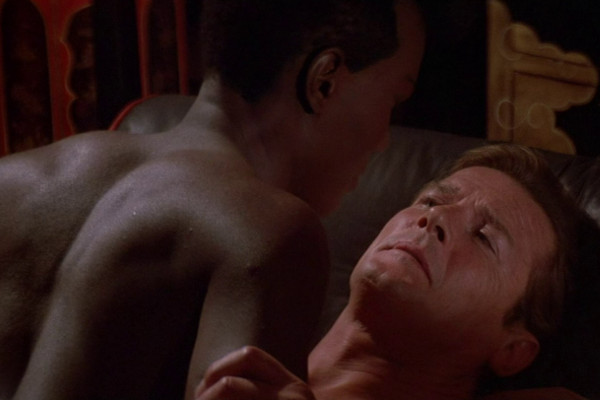
After his initial three-film contract, Roger Moore returned as James Bond on a movie-by-movie basis. Aged 57, even he was surprised to get the call for this seventh entry. Far too old to be an action star - the stunt doubles in this and Octopussy are exceptionally obvious, especially on BluRay - even Roger's mole has gone. In 2015 Moore was quoted in the Daily Mail as saying he had it removed "about 30 years" ago, and that "It didn’t look very attractive and my plastic surgeon told me that it had to go. [...] I also did it so it didn’t become cancerous."
Despite the fact that a man pushing 60 shouldn't really be making films in jacuzzis, this entry actually stands up far better than expected. It may be that, with so many Bond films existing on a single plot, having something a little different is diverting. After all, if you said your favourite Bond movie was one that involved sharks, you'd have to narrow it down - far less so if you said an equine-based plot involving oil minerals and silicon chips. And after years of high speed car chases, having the daredevil stunts take place on horseback, or a slow-moving zeppelin, is quite unique. Not necessarily good, but unique.
There's also some fun with the supporting cast. Bond having Patrick McNee as a partner allows him to investigate without the now-tiresome innuendos that go with any female company, although a talented actor like David Yip was wasted as soon as someone decided he should play an American, the accent clearly beyond him. Of course, being a Bond villain isn't just about acting chops, but a certain kind of presence. Strong actors like Jonathan Pryce, and, here, Christopher Walken, don't quite work in the series' traditional operatic mould. It's almost as if they're too good an actor for the somewhat arch quality to come through fully. Reportedly Walken was far from the first choice, with a more pop-orientated Bond (the memorable theme tune by Duran Duran is a departure) that wanted Bowie or Jagger for the part. While Walken is clearly a much better actor than Jagger - not a hard ask, to be fair - Mick's inappropriate scenery chewing may have given this one the cult classic status it should have obtained.
But where the film really sparkles is with Bond's interactions with Grace Jones as the henchwoman, May Day. By her own admission, Jones was inexperienced, but she does have presence, and her scenes opposite Roger have an energy that others lack. Such matters are probably a mixture of her staying in character off camera, and his personal dislike of her. In his 2008 autobiography My Word Is My Bond, Moore stated: "I’ve always said if you’ve nothing nice to say about someone, then you should say nothing. So I’ll say nothing. [...] And so to bed. Yes, my love scene with Grace. I slipped between the sheets, followed by her and her rather large black dildo. I'm glad she thought it was funny."
Yet Grace, in 2015's ironically-titled I'll Never Write My Memoirs had a very different take on events: "I got on great with Roger Moore. He was very funny and easygoing. He helped me a lot, because I wanted so much to be good. I was a worrier. I worried that I didn’t know what I was doing. When I got stuck he would humor (sic) me." Is it possible that Roger really was a convincing actor and kept his real feelings hidden from Grace? Well, it's unlikely, as he claims to have snapped with her loud music in an adjacent dressing room, pulled out the plug and then went back to his own dressing room before throwing a chair at the wall.
The dildo story does bring to question Bond's sexual prowess, and how this supposedly liberated series went almost 13 years before showing a woman on top. Obviously this was, despite the content, quite a conservative series, and so the idea of showing Bond taking Sylvia Trench from behind in 1963 was unthinkable. But the idea that the world's greatest lover is purely a missionary man on his assignments is perhaps the most shocking thing of all.
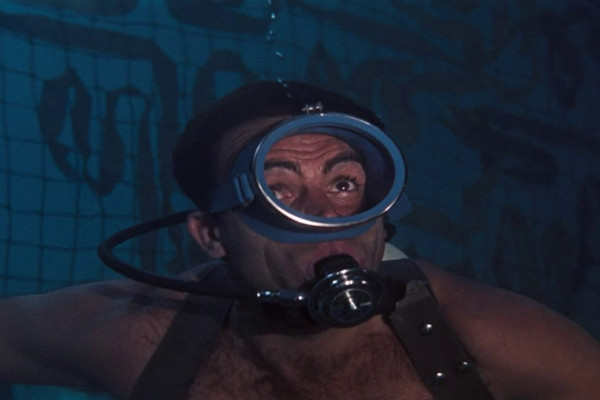
The film that did for sharks what Dr. No did for tarantulas, and Goldfinger did for covering your entire body in paint, Thunderball was a huge financial success, with only Skyfall, inflation-adjusted, getting a bigger box office. It perhaps helps that it had a memorable poster, declaring it "the biggest Bond of all", a poster which made the film look much more exciting than it actually is.
The commonly-held view is that the film's underwater sequences, while quite ground-breaking, drag the pace down. But this isn't quite the whole story, as the stuff on land never really catches fire, either. Possibly it's due to the fact that the series was already getting too silly at this point, but hadn't installed the right amount of self-effacing wit to balance this out. As Roger Moore famously - and accurately - said, it's a film series about a top secret agent who is known the world over and introduces himself to everyone by his name.
There's virtually no logic to it, but Connery, now already getting tired of the role, deigns to add some seriousness to very unserious situations. While his obvious irritation with the part gives it a bit of edge, the fundamental ludicrousness of the whole set up renders the film's lengthy "cat and mouse" game with Largo dramatically inert. It doesn't help that Largo is one of the less interesting villains in the series, and is dubbed by another actor, as with most of Connery's villains, creating a disconnect between the character and the viewer. Or maybe it's just that a grey-haired guy with one eye who threatens you with a pack of ice cubes just isn't actually that threatening at all.
Certainly not a dreadful film, Thunderball can nevertheless be a bit of a slog to get through. The first Bond movie to go past the two hour mark, and it really does feel like it. Although the series immediately went back to a shorter duration with You Only Live Twice, after that point the added length became the norm. All of the Bond movies from 1969 onwards stretched on past two hours (the much-delayed No Time To Die running closer to three) with only Quantum of Solace bucking the trend, or, by a single minute, Brosnan's Tomorrow Never Dies. It's not that a longer film can't reward, but James Bond movies aren't really about subplot and subtext, so an inflated Boy's Own adventure does feel a bit of a grind in parts. As Bond himself says, "it's a long schtory..."
It's also quite badly edited, particularly in the scene with Q. The BluRay format for vintage James Bond movies is a hugely variable one... while it shows just how much care and cost went into the production, it does also, unfortunately, flag up every use of stuntman, every wire, every double... and it even shows up that Domino's "two moles on her left thigh" don't exist. With silly sped-up footage and an abrupt ending (we never do find out what happened to George Pravda's Kutze who couldn't swim) a film that's taken an age to get to where it needed ends without a real climax.
Yet Thunderball definitely isn't a bad film, and there's more than a reasonable argument to be had that it's ranked several places too low. But what ultimately causes it to be this far down in the ranking is that I originally began putting this article together exactly a year ago, with the intention that it coincide with the release of the new movie in 2021. After slogging my way through Thunderball I gave up on writing it for almost ten months. No, it's not a bad film, not at all. But it's one that, after you've watched it, may seriously blunt your enthusiasm for watching another.
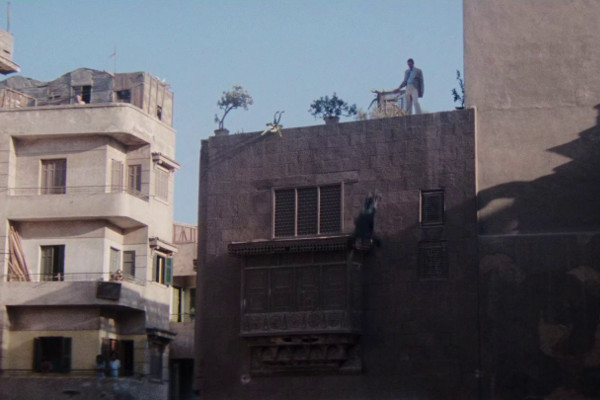
The Spy Who Loved Me is widely regarded as the Roger Moore James Bond movie, and it's not hard to see why. For a start, it's the Moore film that most closely resembles a traditional James Bond film. The silliness isn't absent, but toned down, and the plot, while containing a rival agent, is one that we've seen many times before.
Perhaps most importantly, Roger Moore isn't deconstructing the whole thing, but playing the part straight within the confines of the character. There's still the quips and the innuendoes, but they're being said by James Bond, rather than Roger-Moore-sending-up-Bond. Moore himself stated that this was his favourite of his Bond movies, and the one where he finally got to feel comfortable with the character.
Sadly, it's these reasons why it may not be as successful for some. Although Bond gets to show some steel in the film (a scene where he pushes a henchman off a roof is particularly nasty) his quip-per-minute persona can be quite grating when played for real. Perhaps it's a film that can be enjoyed more in isolation, as by this point all the various tropes are becoming well-worn and overlaboured, and treating them seriously doesn't quite come off.
The theme tune is obviously one of the best, though the incidental music hasn't aged particularly well, and the multiple cleavage shots do undermine the film, making it seem cheesy, even by Bond standards. Yet it's a film that was made specifically to make money, after The Man With The Golden Gun's box office receipts dropped by almost 29% from those achieved by Live and Let Die. (Okay, every film is made with the intention to make money, and no Bond movie is made for the sake of art, but you get the point.) To this end, it does feel even more "committee made" than usual, a Bond film for those who wanted to Roger Moore in a Sean Connery Bond film, complete with plot that is more than a little reminiscent of the previous entry in this ranking.
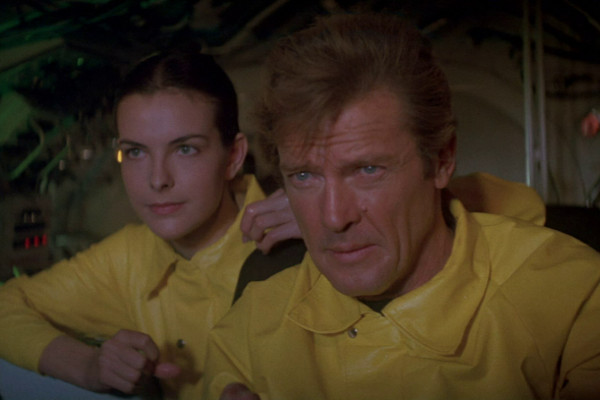
One thing that does hurt the Roger Moore era is that there's inconsistency of tone. While the Connery films became sillier, it was a gradual process, and you could see the through line. Here, sandwiched between Bond In Space and Moore dressing up as a clown is the most grounded and serious of all his James Bond adventures.
Moore noted that even within this film there's an issue with tone, given that it has a talking parrot, and Janet Brown playing Margaret Thatcher. Yet For Your Eyes Only has the odd status that it's both the most admirable and the most forgettable of all the Roger Moore entries. The kind of film that you may even forget's on while you're watching it, a Sunday afternoon time-passer rather than another "event" movie. Such things aren't to be derided: after all, we've seen Bond save the entire world countless times, so battling against more indiscriminate foes with dodgy accents on a lesser scale is quite refreshing.
Roger Moore is, of course, old in this film. Some would argue he was too old when he started at 45, but here, at 53, he's already taken the record for the oldest Bond. A dozen years older than Connery was when he left in 1971, and a year older than he was in the unofficial Never Say Never Again. Older than Daniel Craig in No Time To Die, and over two decades older than Lazenby. Even Pierce Brosnan, who last played the character aged 49, looked like a young pup in comparison. But most strange of all is that this isn't even his last movie, he'd go on for another four years.
Of course, age is relative. Connery looked his age in his later films, whereas Brosnan and Craig looked relatively unscathed in their final appearances, or at least still capable of doing damage. Moore looks pretty haggard for a spy here, his freckles turning to liver spots, and his face getting more lined. Thankfully the feats that Bond performs in this one are so physically taxing that the majority of them wouldn't have been given to Moore whatever his age.
The opening of the movie is a way to sign off on hanging plot threads in the series, and also effectively undermines attempts to make rival James Bond movies with the Thunderball novel characters. After visiting the grave of his wife, Bond is placed in danger in a remote control helicopter that just happens to be controlled by a bald man with a white Persian cat with a diamond necklace. Any similarity between this unnamed character and Blofeld is, of course, entirely uncoincidental.
The producers were so struck with Sheena Easton's looks that this is the first and only time that the theme tune singer appears on screen during the credits. While such things are fine for the music videos which began to accompany the movies, it's a real misstep for the film. The titles should be an abstract representation of the movie's content (which, in fairness, always seems to involve naked women and guns) rather than the deliverer of the song looking directly at you, returning your gaze. There's perhaps a lengthy analysis to be written about Easton subverting the Male Gaze by doing this, but then if you're applying feminist film theory in your study of cinema, James Bond would be the last place to look for adherence to the Bechdel test.
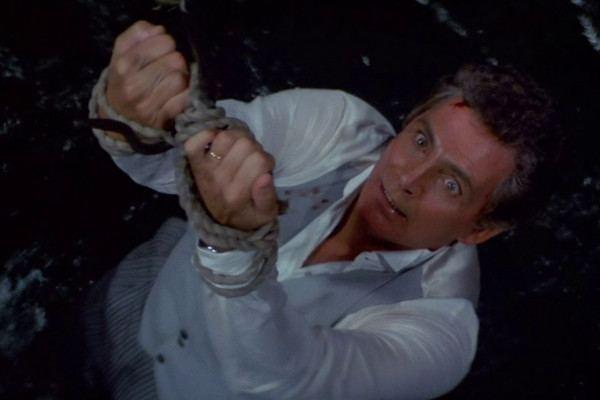
There's perhaps never been a single review of Licence To Kill that doesn't mention that action movies were incredibly popular at the time, and that this was Bond's attempt to cash in on the craze rather than doing its own thing. However, there's a repellent, somewhat mean-spirited edge to this entry, more Death Wish than Rambo III.
As the first - and, to date, only - 15 certificate Bond, it raises questions about how far 007 can go into this more realistic universe. An enormous amount of Bond villains like to keep pet sharks, but usually said sharks tend to just swim around like a spare dildo until their intended prey can get away. But a Bond film where Felix Leiter's wife is raped and murdered, and then Felix mutilated by a shark is a grim proposition. While a more realistic Bond is fine - and Daniel Craig has done well on this path under 12A certificates - this one goes too far, for what Bond is/was. Essentially it's like watching an episode of Tom and Jerry where Tom's face gets turned into the shape of an iron, but, instead of turning back in the next frame, he's scarred for life and decides to top himself.
The idea of Bond going rogue is quite an intriguing one (and previously hinted at in some dialogue of The Living Daylights) but it's an odd tonal mix. While a serious Bond film can provide its own delights, it's also placed under stricter constraints than its camper counterpart. As just one example, having sitar music accompany Bond's journey to India in a silly movie like Octopussy isn't jarring - but having "Latin" music accompany Robert Davi every time he appears on screen renders Licence To Kill the air of a cheesy TV movie. This awkward juxtaposition occurs throughout, where Q is drafted into the plot for a few cheap laughs, but his antics come between swearing and a woman scarred through being whipped. Let's not even talk about the laughable scene where a man's head explodes.
The concept of Bond being the same character albeit played by different actors is one that seems to trouble a lot of people, some even inventing elaborate theories to explain it. But for those of us who have watched cheap TV SF/fantasy from the '60s-'70s, such matters aren't that striking. Not only would characters be played by different people, sometimes the same actor would play different parts within the same show. It's perhaps an odd convention in the present day, but just part of life back then.
However, Bond's CIA friend Felix Leiter requires a bit more of a stretch of the imagination. For the original run from the '60s-'80s, this is his seventh appearance (not counting the alternate reality of Never Say Never Again), but only the first time he's been played by the same actor. Even more confusingly, that actor is not John Terry, who didn't really make much of an impact during his few scenes of The Living Daylights, but instead an older Leiter played by David Hedison, the Leiter from 1973's Live and Let Die.
The average actor to play the part up to this point was six feet tall and 41 years old, though this varied wildly, with the 5'7 Norman Burton being easily recognised by Sean Connery in Diamonds are Forever, despite the fact that the last time he saw Felix, he was 6'4. Here Hedison essays an aged Leiter, playing the part aged 61. It doesn't really make much sense as Bond and Leiter have always been contemporaries (Dalton was still just 43) and it's just two years after the previous outing. While the suspension of disbelief is paramount for any James Bond entry, having Leiter age over 22 years within the space of 2 is somewhat hard to take.
Timothy Dalton had been asked numerous times if he was interested in the role of Bond, from right back when he was just 22. He was a good choice for the part, and somewhere in this film is a good James Bond film, possibly even a classic one. But it's buried beneath tonal uncertainty, and an obnoxious air. Lastly, the allegation that the film's title was changed from "Licence Revoked" because Americans wouldn't understand it is debatable... it is odd calling the film something that it's expressly not about, but could they have got a decent song out of "Revoked"?